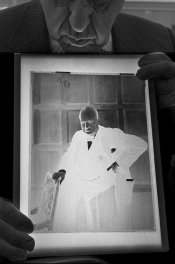Thanks OP for taking the time to running this experiment.
I'm not sure what to make of this info. I shoot tens of rolls of Foma 400 every months. It is my main black and white film in medium format. EI is 250-320 (incident exposure via a Sekonic meter) for best results in my setup. EI160 results in massive grain, gross overexposure of zone III shadows and frame bleeding. At 320 in Foma's own Fomadon LQN, and at 250 in Fomadon Excel, this is a wonderful film with tonality that is unparalleled for my taste. Yes: I prefer this to HP5 and Tri-X by a country mile.
Here's a screenshot of Foma's development curves for the two products above, from Foma's datasheet found here
https://www.foma.cz/en/fomapan-400
A few thoughts for OP which might shed light on the mismatch between their results and Foma's specs, which I agree with based on my experience with this film.
1. format. Did OP test the 35mm variety? Could there possibly be differences in film stock across formats. I only shoot the 120 version. Could OP test the 120 version?
2. Replenishment regime- how does this affect OP's results? Could OP test stock or 1+1.
3. Is OP testing Fomapan 400 or Arista 400. The two are NOT the exact same product.
4. Xtol. I would recommend using Foma's own developers. Fomadon Excel works wonders with Foma 400. Fomadon Excel is said to be a clone of Xtol, though it is not clear which generation of Xtol and if/how were the specs adapted. Was the product adapted somewhat to Foma's film range? Fomadon LQN: other little know product which deserves to be used and give incredibly printable negatives at EI320.
5. Replication of OP's experiments. Foma have been know to be somewhat erratic and show low consistency across batches. How many replicates across batches of the film have been employed by OP for the tests above.





